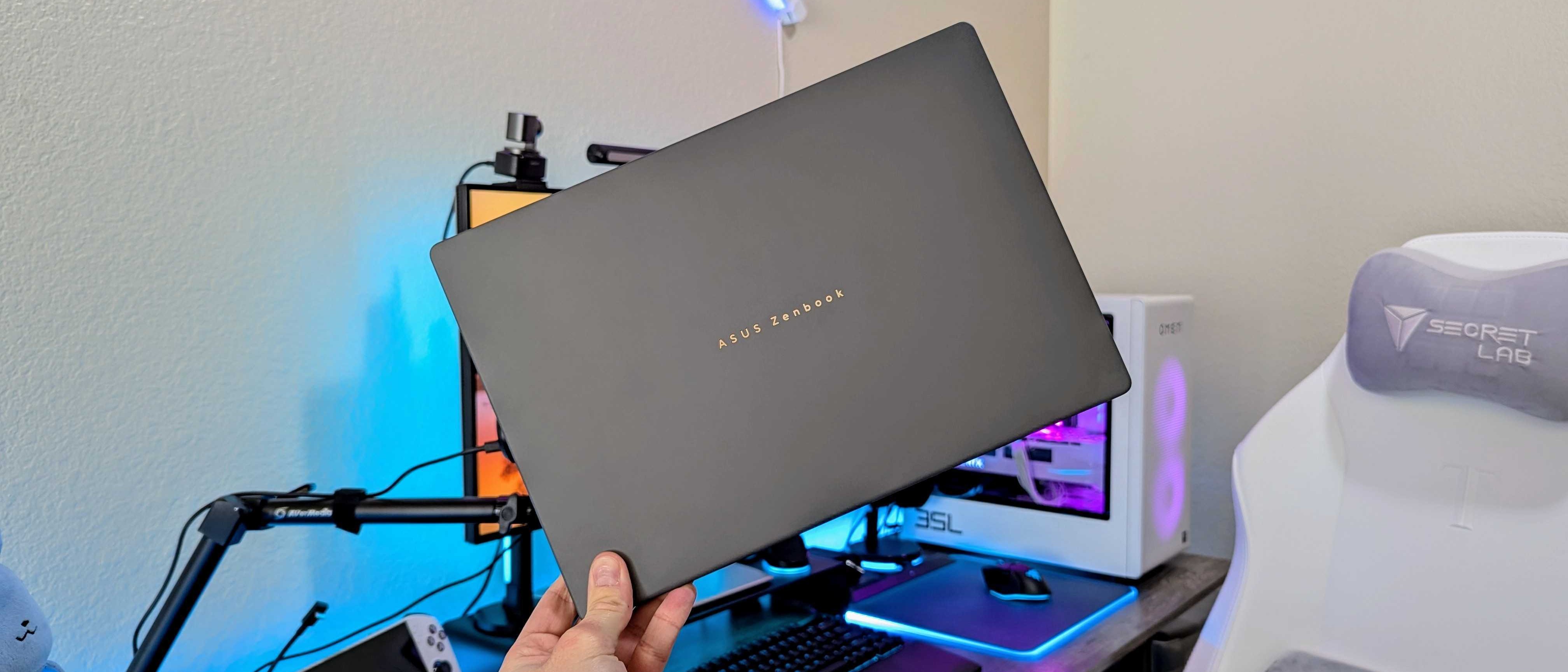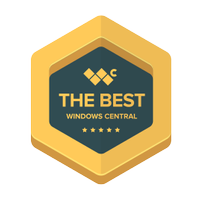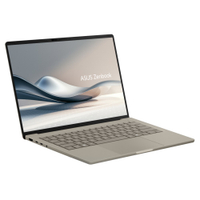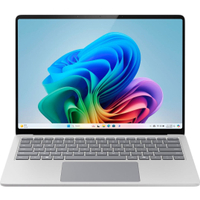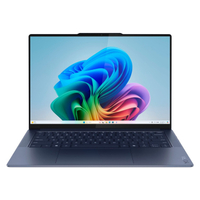Windows Central Verdict
With a magnesium chassis as light as air and as tough as stone, Snapdragon X series chipsets that barely sip on the physics-defying massive battery, and a great balance of practical function and aesthetic form, the Zenbook A14 is one of the best laptops of the year. It could've been even better with its anticipated $900 entry-level configuration, but a $100 price bump just prevents this laptop from also being one of the best deals for a thin and light AI PC.
Pros
- +
Refined, ultra-light, and surprisingly sturdy minimalist design
- +
Great selection of ports new and old
- +
Battery simply refuses to die
- +
Top-notch Windows experience
Cons
- -
Slippery keyboard
- -
Easy to find the limits of the base Snapdragon X chipset
- -
Not quite the killer value we wanted it to be
Why you can trust Windows Central
I fell in love with the ASUS Zenbook A14 (2025) when I first saw it at CES 2025, and I'm certainly not the only Windows Central member to do so — it won a "Best of CES 2025" award from us, after all.
ASUS may have avoided calling this laptop the "Zenbook Air" (and got pretty close anyways with "A14"), but few laptops are worthier of the moniker than this device.
At less than a single kilogram, the Zenbook A14 still manages to boast best-in-class endurance and an incredibly durable build, and its price tag is almost as light as the laptop itself.
The Zenbook A14 could be the start of something extremely special for ASUS, the perfect thin-and-light Windows laptop for the casual consumers and mobile warriors that need something reliable, long-lasting, and as portable as possible.
Starting at $1,000, the ASUS Zenbook A14 may be one of the absolute best Windows laptops of 2025... But this laptop was supposed to start at $900, and the $100 price increase at the bottom makes the value discussion surrounding this laptop even murkier.

As one of Windows Central's most prolific laptop reviewers, I have hundreds of hours of experience testing every element that makes a great laptop great. Is the display comfortable and bright? Is the performance reliable? Do I have the ports I need? Will the battery last me the entire day? I can and will answer those questions and more.
Disclaimer
This review was made possible thanks to a review sample provided by ASUS. ASUS had no input nor saw the contents of this review prior to publication.
Recent updates
Apr. 2, 2025 — I updated this review now that the $999.99 (previously $899.99) model of the ASUS Zenbook A14 is available to purchase, along with my initial thoughts on the price increase. I'll update my review again once we've gone hands on with that model.
Zenbook A14 review: Pricing and specifications
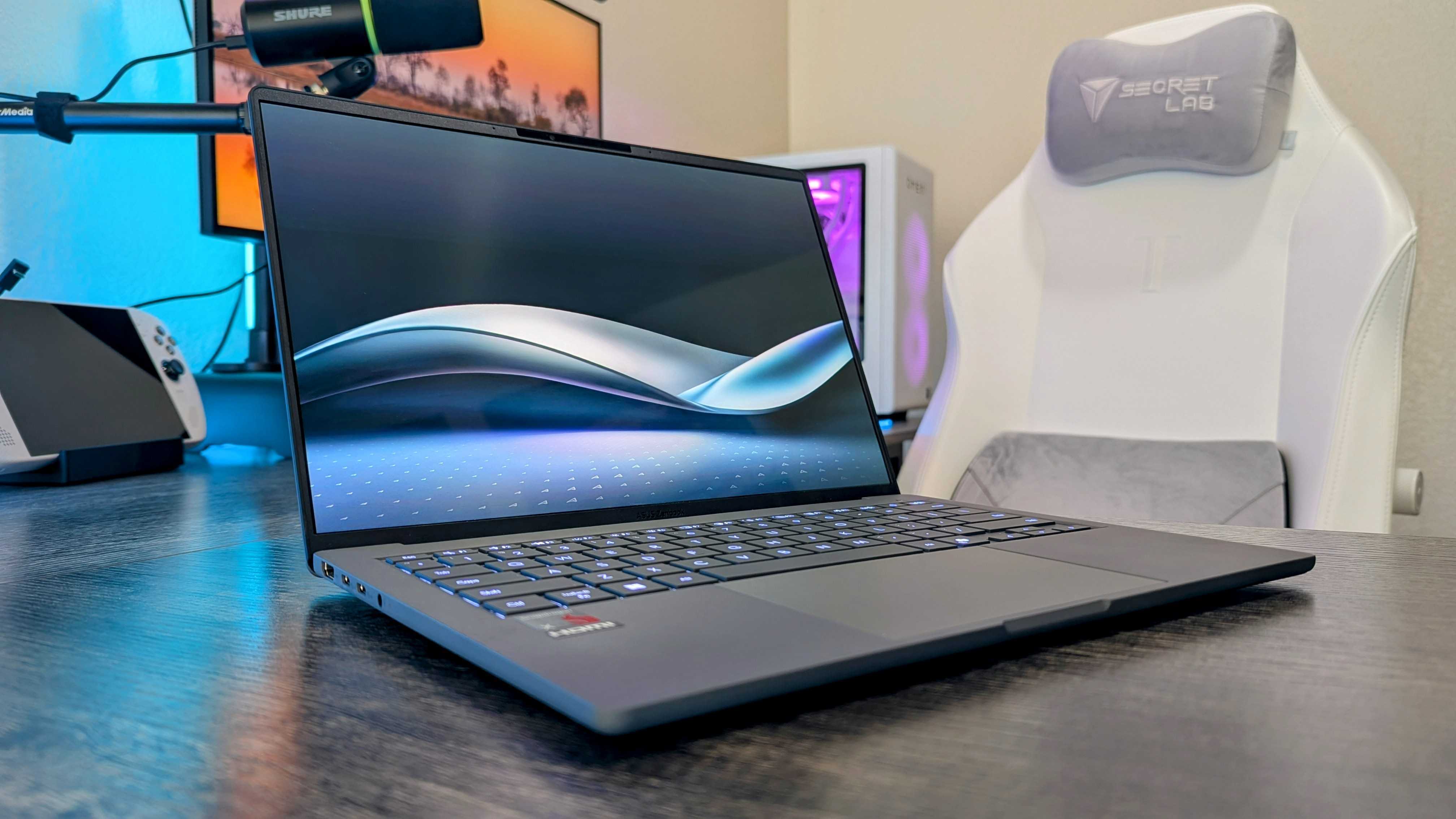
The ASUS Zenbook A14 isn't the only full-featured laptop that can claim to weigh less than a kilogram (the Lenovo ThinkPad X1 Carbon I reviewed is a great example), but it's certainly one of the most attainable.
• Price: $1,099.99 at Best Buy | ASUS
• Display: 14-inch ASUS Lumina OLED, 16:10 aspect ratio, FHD+ (1,920 x 1,200) resolution, 60Hz refresh rate, 0.2ms response time, 400nits max brightness, VESA DisplayHDR True Black 600 support, 100% DCI-P3 color gamut, glossy, non-touch
• CPU: Qualcomm Snapdragon X X1-26-100 (8 cores, 8 threads, up to 2.97GHz
• GPU: Qualcomm Adreno
• NPU: Qualcomm Hexagon (Up to 45 TOPS)
• RAM: 32GB LPDDR5X @ 8,533MHz
• Storage: 1TB M.2 2280 NVMe PCIe Gen 4x4 SSD
• Battery: 70Whr, 65W USB Type-C charging
• Dimensions: 311 x 214 x ~13.4-15.9mm (12.23 x 8.42 x ~0.53-0.63in)
• Weight: 980g (2.16lbs)
Technically, the ASUS Zenbook A14 (2025) starts from $999.99 at Best Buy, and that'll be with the 8-core Qualcomm Snapdragon X Plus, 16GB of RAM, and 512GB of SSD storage. That's the configuration that's most exciting, but you can't buy it yet.
The only configuration you can purchase right now is the version I was sent to review. That ASUS Zenbook A14 retails for $1,099.99 at Best Buy, and is equipped with the entry-level 8-core Snapdragon X chipset, 32GB of RAM, and 1TB of SSD storage.
Initially, I stated that the upcoming Best Buy exclusive would likely be the better deal, but that was when it was supposed to launch at $900, not $1,000. That's not quite the killer deal we expected, and there's now only $100 separating the two configurations.
There's apparently a higher-end configuration powered by the high-end Snapdragon X Elite on the way, too, but we don't have information on pricing or availability yet.
In the box, you'll find the ASUS Zenbook A14 (2025), a 65W USB Type-C charger, and a white, magnetically closed laptop sleeve made of recycled polyester. This laptop is covered by ASUS' 12-month standard warranty, which covers OLED display burn-in.
ASUS Zenbook A14 (2025) — Snapdragon X Plus | 16GB RAM | 512GB SSD
Coming soon: $999.99 at Best Buy
A $100 price hike from the original $900 price point of this configuration is a little hard to swallow, but this is still an excellent thin-and-light PC for casual computing, even if it's not the killer deal we hoped it would be.
👉See at: BestBuy.com
👀Also consider: ASUS Zenbook A14 (2025) w/ Snapdragon X | 32GB RAM | 1TB SSD for $1,099.99 at Best Buy or $1,099.99 at ASUS
Zenbook A14 review: Design and build quality
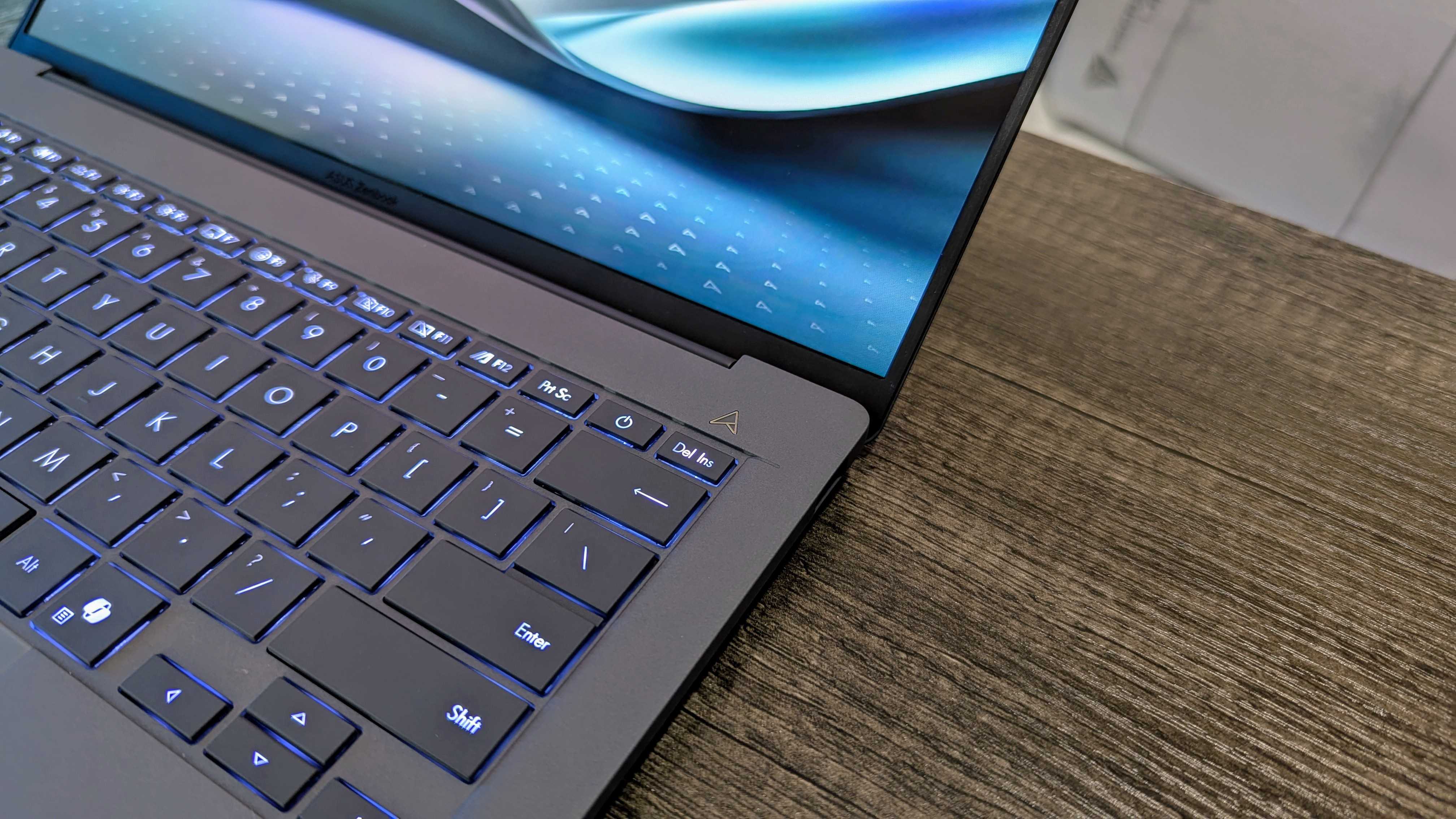
Some people conflate "light" with "cheap," in that poorly made products often feel suspiciously hollow or fragile, but that kind of thinking does not apply to the ASUS Zenbook A14.
Yes, this laptop is light enough that, at first hold, it may seem like a dummy device rather than a functional laptop, and that's due to it being one of few laptops that weigh less than 1kg.
That's 21% less weight than the 2024 Apple MacBook Air, and you do notice that reduction in mass. However, the Zenbook A14 avoids feeling cheap because of its material of choice: Ceraluminum.
That's ASUS' fancy name for a magnesium alloy (30% lighter and 300% stronger than your average laptop's aluminum) treated with a hard, scratch-resistant ceramic coating. The laptop as a whole is subjected to US MIL-STD 810H military-grade durability tests, and passes that standard with flying colors.
I've used far more expensive laptops than the Zenbook A14 that feel lower quality in the hand, due to panel flexing, concerning creaking noises, and a general lack of reassuring solidity. There's none of that with this laptop — it's rock solid through and through, and that's an impressive achievement.


It's especially impressive when you consider this laptop's starting price, as it comfortably surpasses practically anything else at or below $900 in terms of build quality and design.
ASUS didn't cut corners with the ports, either. In addition to the dual 40GBps USB Type-C 4.0 ports with Power Delivery and display output support, you also get a full HDMI 2.1 port, a 10GBps USB Type-A 3.2 Gen 2 port, and a 3.5mm audio jack.
Those aforementioned USB4 ports support Thunderbolt 4 connections, so you have a lot of options. The Zenbook A14 supports up to three 4K/60Hz external monitors in addition to its native display, too.
It's a great port selection, I just wish one of the USB4 ports was placed on the right side, as both are left-bound — which somewhat limits your flexibility for charging and docking.
If there's one weak point, it's a trade-off ASUS made. The display hinge is a custom design that's finely tuned for one-handed opening, and it is an impressive bit of engineering. The Zenbook A14 is so light, though, that the hinge by necessity requires little force to adjust, so the display can wobble.
Overall, though, I love this laptop's design. It's not flashy in the slightest with its muted gray or beige colorways, but it is refined and minimalist, with simple lines, compact dimensions, and elegant details that never compromise on functionality. Most people would never ask for more than that.
Zenbook A14 review: Display quality
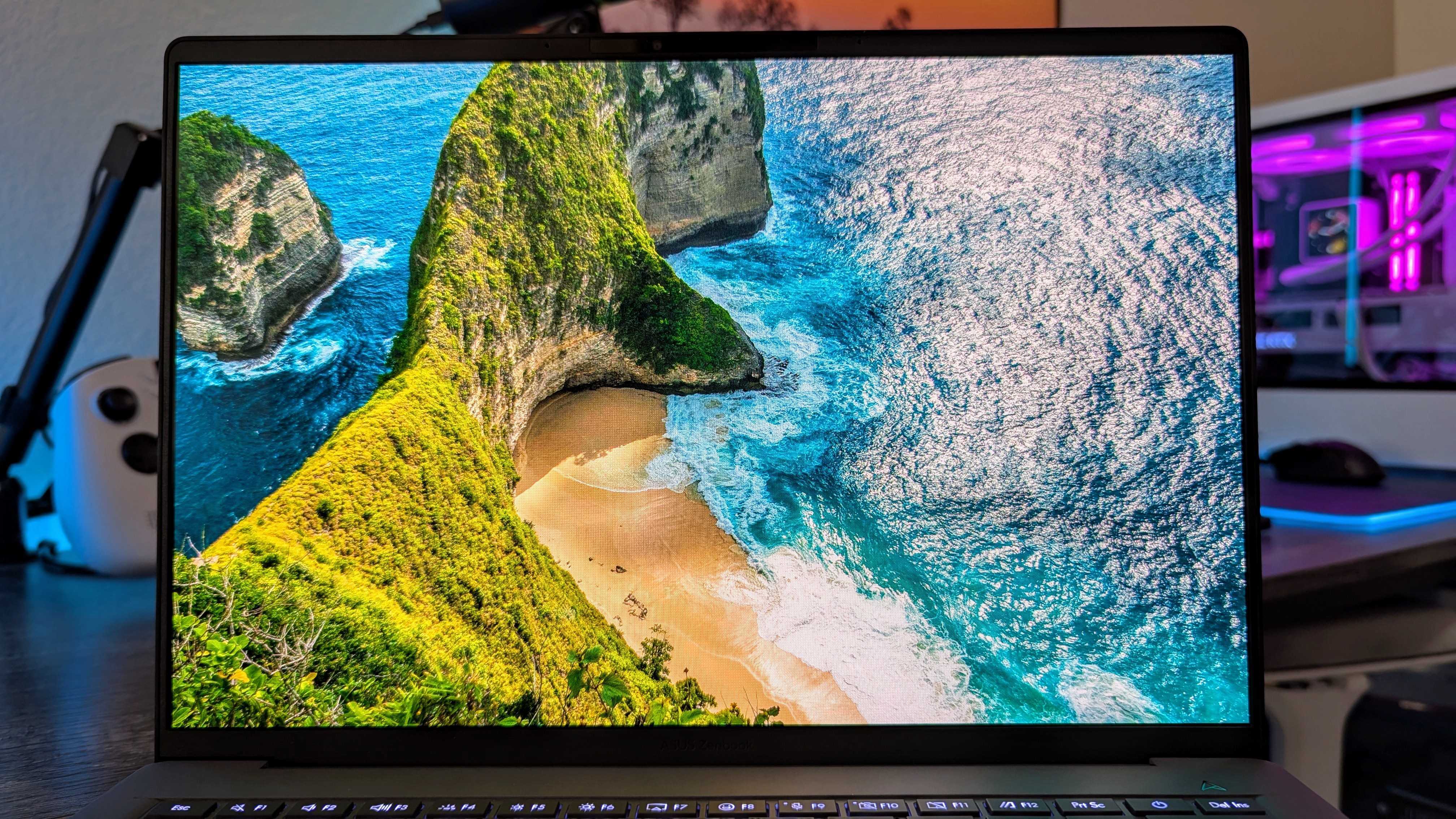
ASUS has been putting fantastic OLED displays into its laptops for longer than most, and has even built its own "Lumina" brand as a stamp of guaranteed quality.
To no surprise, the ASUS Zenbook A14 rocks one such Lumina OLED panel, and it's a great display for casual computing and media consumption.
This 14-inch, FHD (or 1200p), 60Hz screen is clear, consistent, and colorful. The vibrancy hits hard, and the inky blacks draw you in, but two low blue light certifications (including TÜV Rheinland Eye Care) help ensure comfort over hours of use.
You're far from guaranteed such a beautiful viewing experience at under $1,000, but that low resolution and locked 60Hz refresh rate quickly become a negative when you go over it.
It's sharp enough, but text can still look fuzzy. It's smooth enough, but scrolling can still feel jagged.
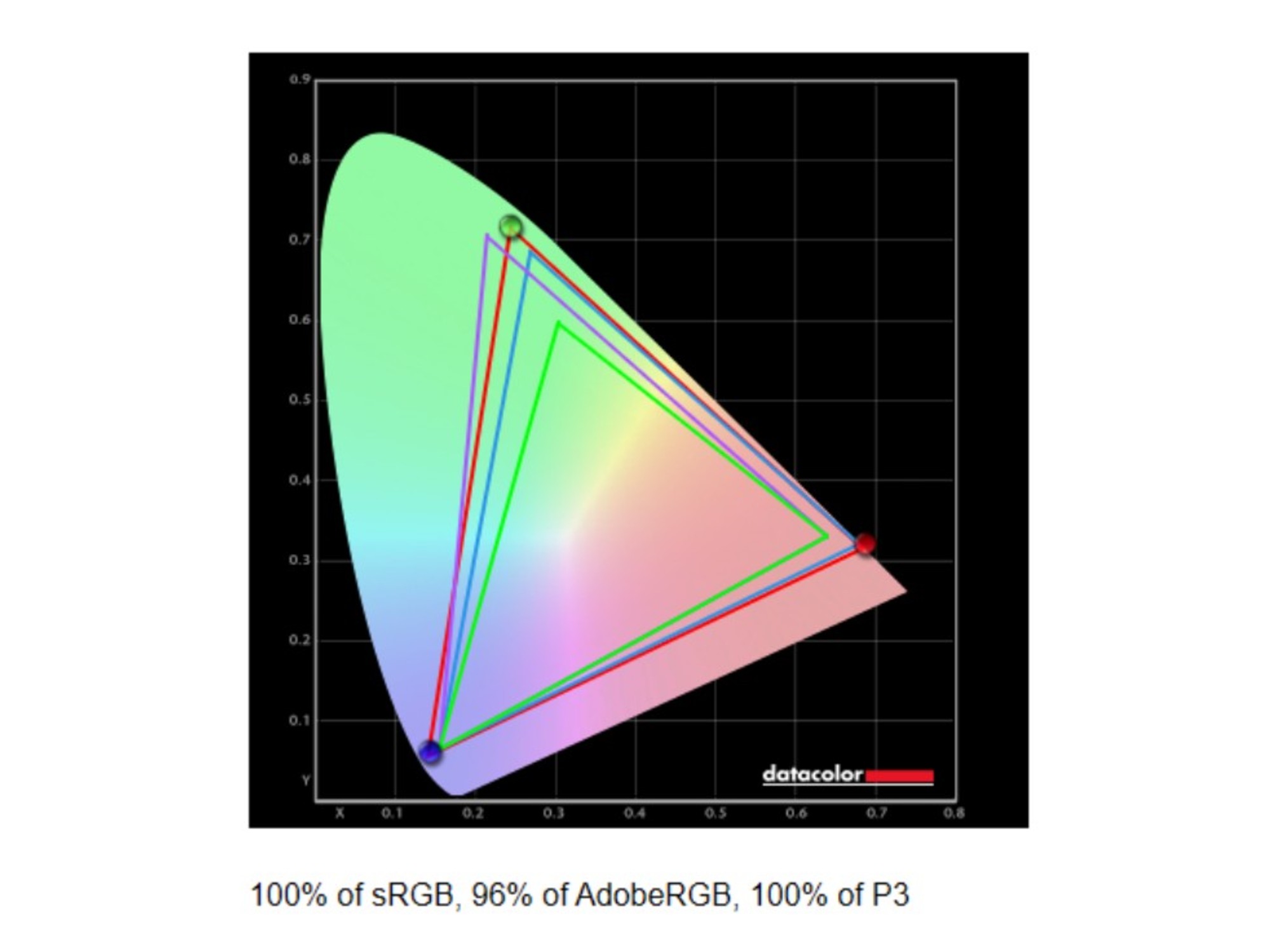
Setting | Brightness | Black | Contrast | White point |
|---|---|---|---|---|
0% | 4.6 | 0 | Infinite | 6,600 (0.312, 0.328) |
25% | 28.7 | 0 | Infinite | 6,600 (0.312, 0.327) |
50% | 89.3 | 0 | Infinite | 6,600 (0.312, 0.327) |
75% | 201.3 | 0 | Infinite | 6,500 (0.313, 0.328) |
100% | 394.7 | 0 | Infinite | 6,500 (0.313, 0.330) |
ASUS promises 100% adherence to the DCI-P3 color gamut, and the Zenbook A14 delivers. It's a very color accurate display, and ASUS still does a good job of giving you multiple ways to tweak the display to your liking in MyASUS, including switching between preset color profiles and adjusting color temperature.
Up to 400nits of brightness isn't exceptional by any means, but it's good enough in this price range (and vibrant OLED displays often appear brighter than they are). The Zenbook A14 can go up to 600nits for High Dynamic Range (HDR) content, so it does better than most in that respect.
White balance and colors are consistent across all brightness levels, too, and is very well-balanced between cool and warm hues.
Beyond the lower resolution and refresh rate, though, I do have to mention Pulse-Width Modulation (PWM), which the Zenbook A14 does use at lower brightness levels. I'll let our colleagues at Android Central explain what PWM is and why it's important, and just focus on this specific display.
ASUS does list this display as "flicker-free" and gives you some control over the PWM as a part of its extensive OLED care features, and it does refresh at a higher rate for dimming than some other OLED displays I've used. However, those particularly sensitive to PWM at anywhere from 500Hz and above may still suffer from eye strain and headaches when using the Zenbook A14 for long periods.
Zenbook A14 review: Performance and thermals
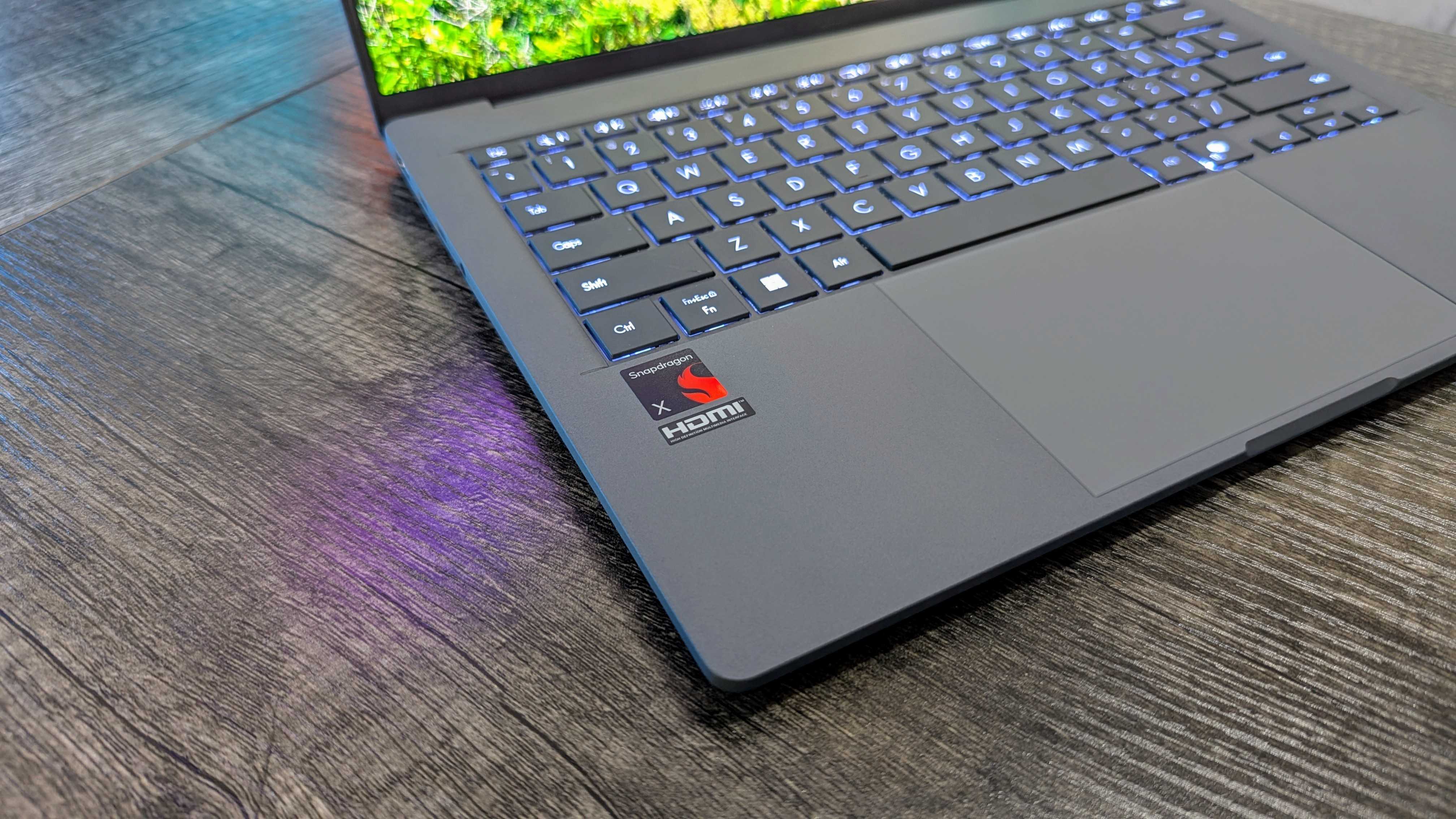
The ASUS Zenbook A14 is powered entirely by the Qualcomm Snapdragon X series, the latest attempt to bring Windows on ARM into the mainstream with great performance, efficiency, and features.
At $900, you'll find the 8-core Snapdragon X Plus that we already know and trust to offer a reliable, consistent computing experience in mid-range laptops. That's not the version I have, though.
No, the $1,100 model is actually powered by the latest, entry-level Qualcomm Snapdragon X announced at CES 2025, which brings the platform down to as low as $600. This isn't that laptop, though, and that's why it's not completely clear-cut to recommend the Zenbook A14 right now.
Let's get one thing straight, though: the ASUS Zenbook A14 performs totally fine. Windows is snappy and smooth, it's quick to boot up and log you in, apps open swiftly, and casual computing in general is a breeze.
The Zenbook A14 and its low-powered Snapdragon X was more than capable of handling my mobile workload. There were some stutters here and there, and I could see the gap between this chipset and more expensive alternatives from Qualcomm, Intel, and AMD, but I wouldn't describe it as a bad performer.
This laptop also runs incredibly cool, and even under heavy load isn't particularly loud when the fans spin up. For the majority of consumers, the Snapdragon X is more than enough to get the job done now and into the future.





If you turn to benchmarks, the Qualcomm Snapdragon X really isn't that far behind the best from Intel, AMD, and Qualcomm, and even actively beats the Intel Core Ultra 7 256/8V we've seen in many ultra-premium laptops in multicore performance.
At least, that's true on paper. Most of what casual consumers do on their computer now runs natively on ARM64, especially web browsing (which feels great on the Zenbook A14), but you really feel the lack of performance headroom when you do have to emulate x86_64 programs.
More than that, though, the Adreno GPU inside the Snapdragon X is massively handicapped versus the X Plus and X Elite, which already performs poorly against Intel's and AMD's best in gaming.
I couldn't even get 3DMark Time Spy, our most-used GPU-focused benchmark, to run on the Zenbook A14 at all. In Wild Life Extreme, an alternative cross-platform 3DMark benchmark, it performed less than half as well as all the laptops I've recently tested, and actually scored similarly to the underpowered Lenovo ThinkPad X12 Detachable (Gen 2) I reviewed.
To wrap this up: the Snapdragon X is a good, balanced chipset for casual computing like web browsing, emails, Microsoft Office, and beyond, but any heavier workload will stress it; 32GB of RAM doesn't help cover its weaknesses. The 8-core Snapdragon X Plus is only slightly better on paper, but, in reality, is far more accommodating to emulating, gaming, and creation.
Zenbook A14 review: Software and AI experience
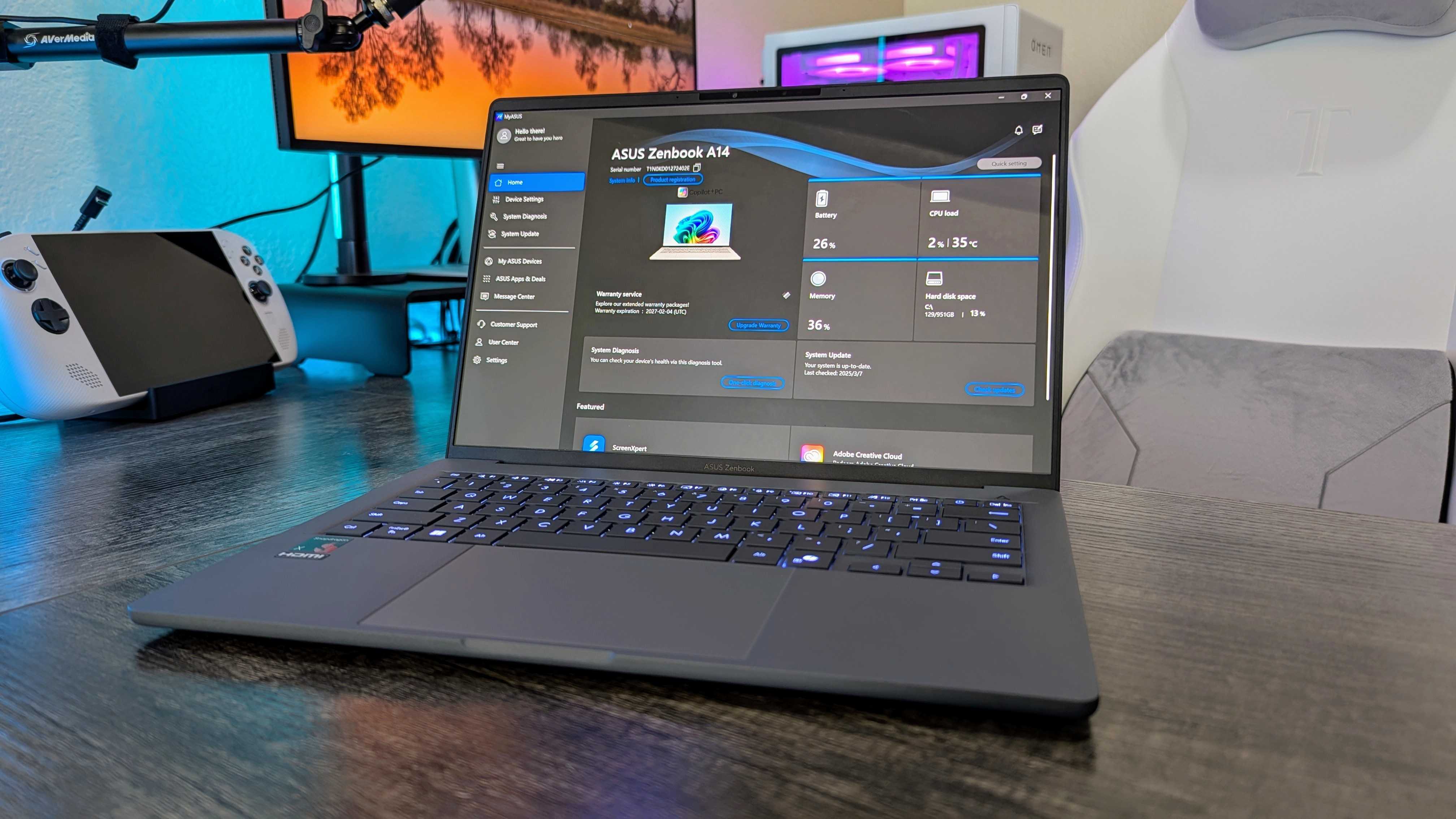
Would you believe me if I told you that the Zenbook A14 runs Windows 11? Yes? Ah, it's hardly surprising.
ASUS hasn't loaded this laptop with an ungodly amount of bloatware, though... Apart from McAfee Antivirus (gross). It's a clean, stable build of Windows with some added ASUS features built on top.
That includes the wonderful MyASUS suit for device management and firmware updates, which gives you a ton of control over the battery, performance, display, audio, and additional hardware features.
Other apps like GlideX and ScreenXpert help manage connect multiple devices or organize your windows, and they're easily uninstalled if you decide you don't need them. ASUS did good.
Of course, the Neural Processing Unit (NPU) inside this laptop also makes it a full-featured Copilot+ PC. Being an AI PC still doesn't mean much to the average consumer, at least right now, but the Zenbook A14 is future proofed for many years to come as Microsoft, ASUS, and other companies continue to invest more in artificial intelligence.
Zenbook A14 review: Battery experience
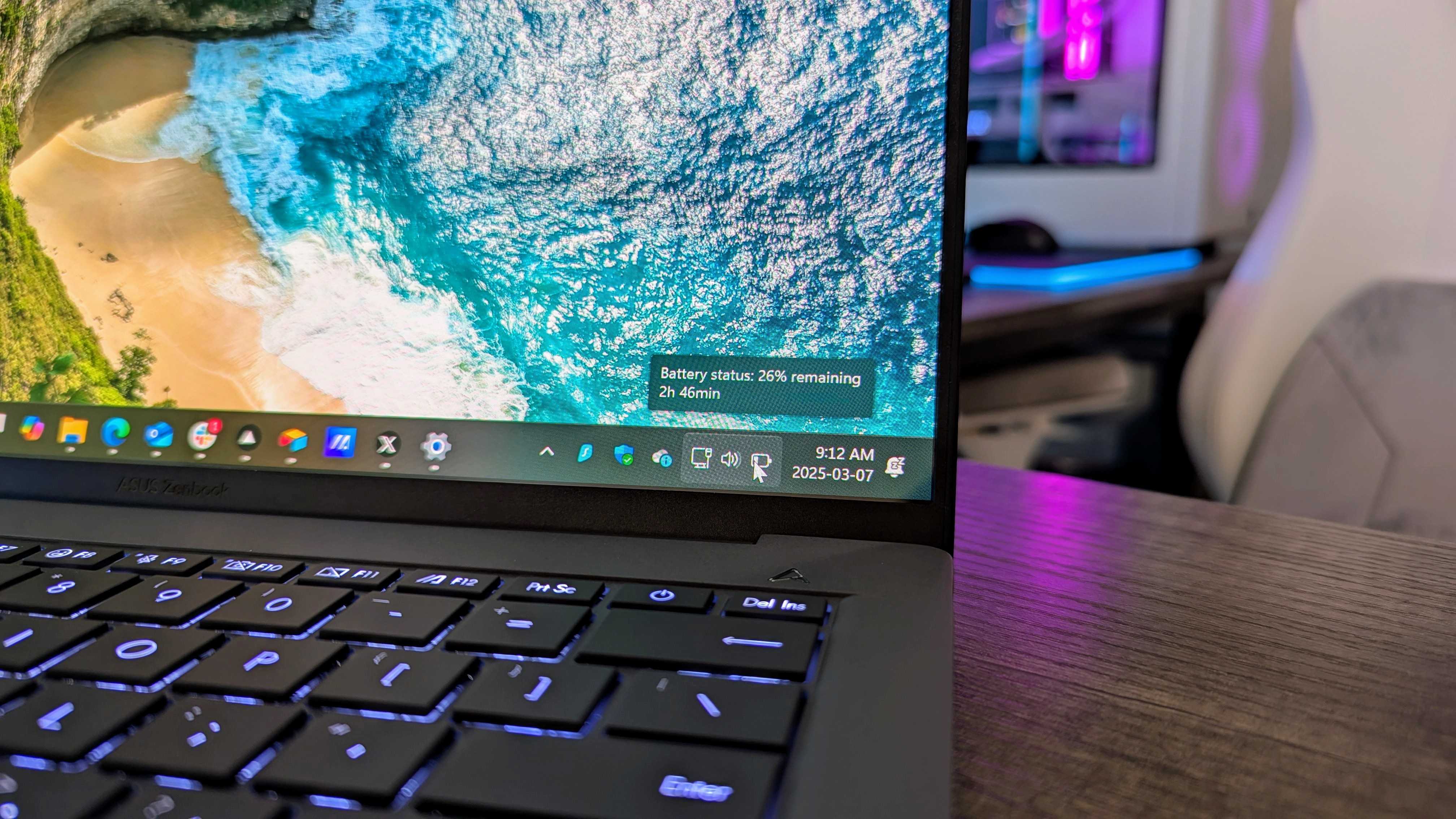
Despite the ASUS Zenbook A14 weighing less than my hopes and dreams, there's a rather colossal 70Whr battery inside this laptop. To put that into perspective, the similarly sized Lenovo ThinkPad X1 Carbon only boasts a 57Whr cell.
What happens when you take a massive pool of power, add a power-sipping System-on-a-Chip (SoC), and top it off with a modest display? You get incredible endurance, and the Zenbook A14 really delivers here.
In Procyon's One Hour Battery Consumption Test, the Zenbook A14 drained 7% after looping through a generic Microsoft Office workload, and then another 7% when looping an HD video (in both cases on the "Balanced" performance profile, at 200nits display brightness, the keyboard backlighting set to "Low," and the volume at 50%).
Those aren't the absolute best numbers we've seen out of a laptop, but the Zenbook A14 is remarkably consistent regardless of what you do with it. Even now, with multiple applications, an active Virtual Private Network (VPN), and well over a dozen open browser tabs, I'm still projected to have another six hours of active use remaining. I'm at 40% battery life.
Running a Windows Battery Report backs those estimates — squeezing over 12 hours of actual screen-on usage from the Zenbook A14 isn't just possible, it's easy.
There's no absurd throttling being done to achieve that endurance, either. I tested the Zenbook A14 on and off the charger with identical settings, and observed a 0.7% drop in CPU performance and a 1% drop in GPU performance.
Charging is also a breeze with 65W Power Delivery through either USB4 port, although I do still wish one of the ports hopped over to the other side.
Zenbook A14 review: Keyboard and touchpad
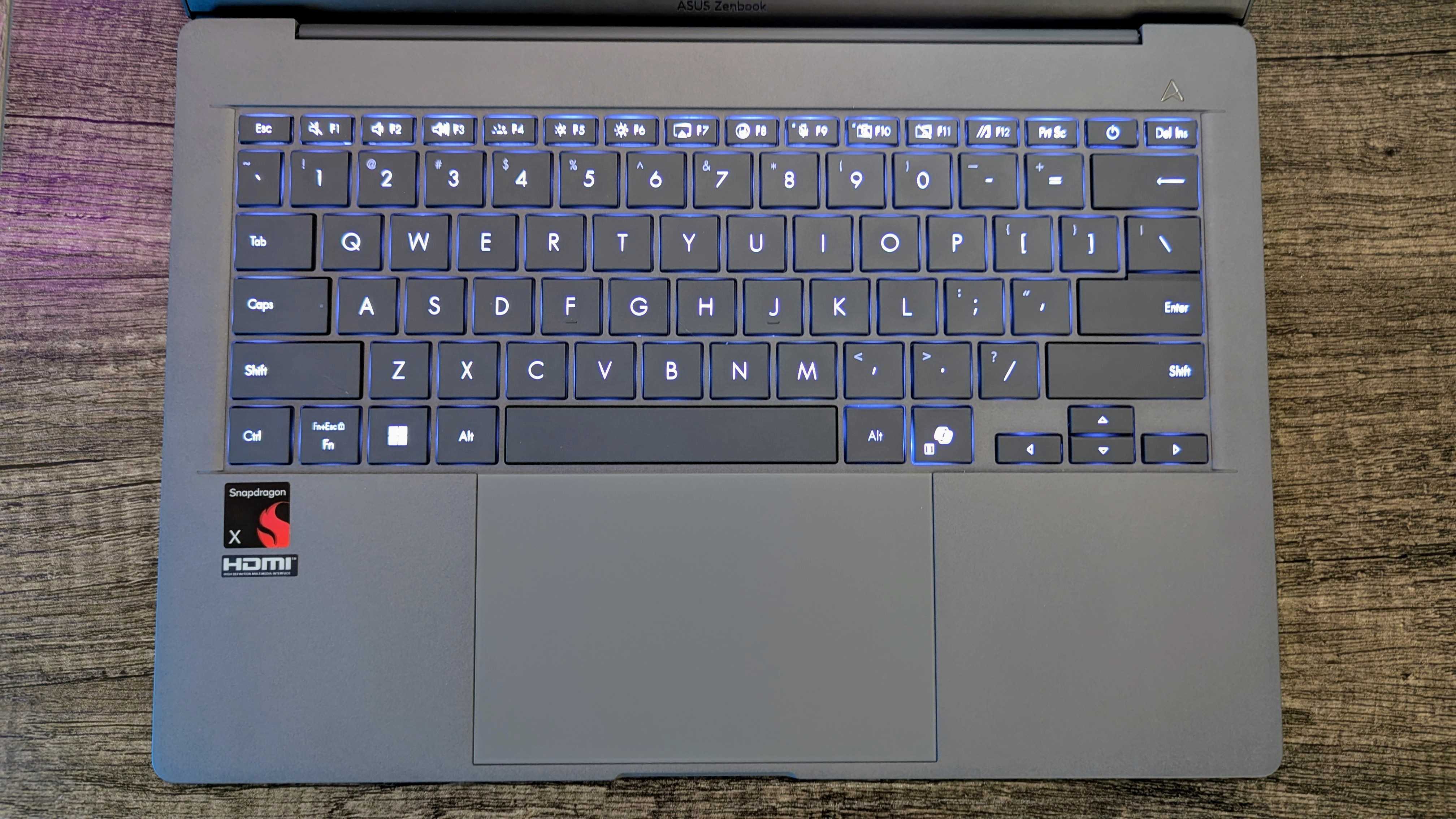
I've been a big fan of ASUS' keyboards the last few years, another area in which the company has massively stepped up its game to better compete with Lenovo and HP.
The unique design of the Zenbook A14 meant a unique keyboard, but ASUS still managed 1.3mm of travel underneath 0.1mm dish-shaped keys. Key action is also great, with excellent responsiveness and feedback, although not quite as tactile as my favorite laptop keyboards.
The layout is spacious and thoughtful, the function row is smartly designed, the purplish, off-white keyboard backlighting is consistent, easy on the eyes, and even highlights secondary functions and symbols. There's almost nothing to really criticize.
Except, ASUS' new keyboard coating isn't my favorite. The gray keys do a great job combatting fingerprint smudges and marks, but what ASUS describes as "smooth" feels more like "slick."
It's not quite as bad as the Lenovo Yoga Slim 7i 15 (Gen 10) Aura Edition I reviewed, but it does make the keyboard a little less comfortable.
Back to the positives, the glass touchpad takes up as much space as reasonably possible and is blessed with a silky texture and decent mechanical button action. Microsoft Precision drivers enable reliable gesture support and pinpoint accuracy, too.
On top of that, ASUS built some genuinely useful features into the touchpad, allowing you to adjust your volume and brightness or scroll through tracks by sliding along the sides of the touchpad. This feature works great, but it would be significantly better if ASUS would embrace haptic touchpads. Just saying.
Zenbook A14 review: Other hardware

Whichever configuration of the ASUS Zenbook A14 (2025) you purchase, you'll be getting a well-rounded feature set appropriate for any premium Windows laptop, with some caveats.
The front-facing FHD webcam is solid with good color reproduction and exposure, but it struggles with white balance and details. The microphones are solid, and are backed by ASUS' AI noise cancellation (with several presentation modes).
The dual speakers aren't going to blow you away, but they are better than any laptop this thin and light has a right to be. ASUS used "super-linear" speaker designs with a quad-dampener suspension system to reduce rattle and increase volume, and it works.
They're not the clearest, fullest, or deepest-sounding speakers, but they do get loud and stay relatively consistent in quality throughout. You also get Dolby Atmos support for enhanced spatial audio.
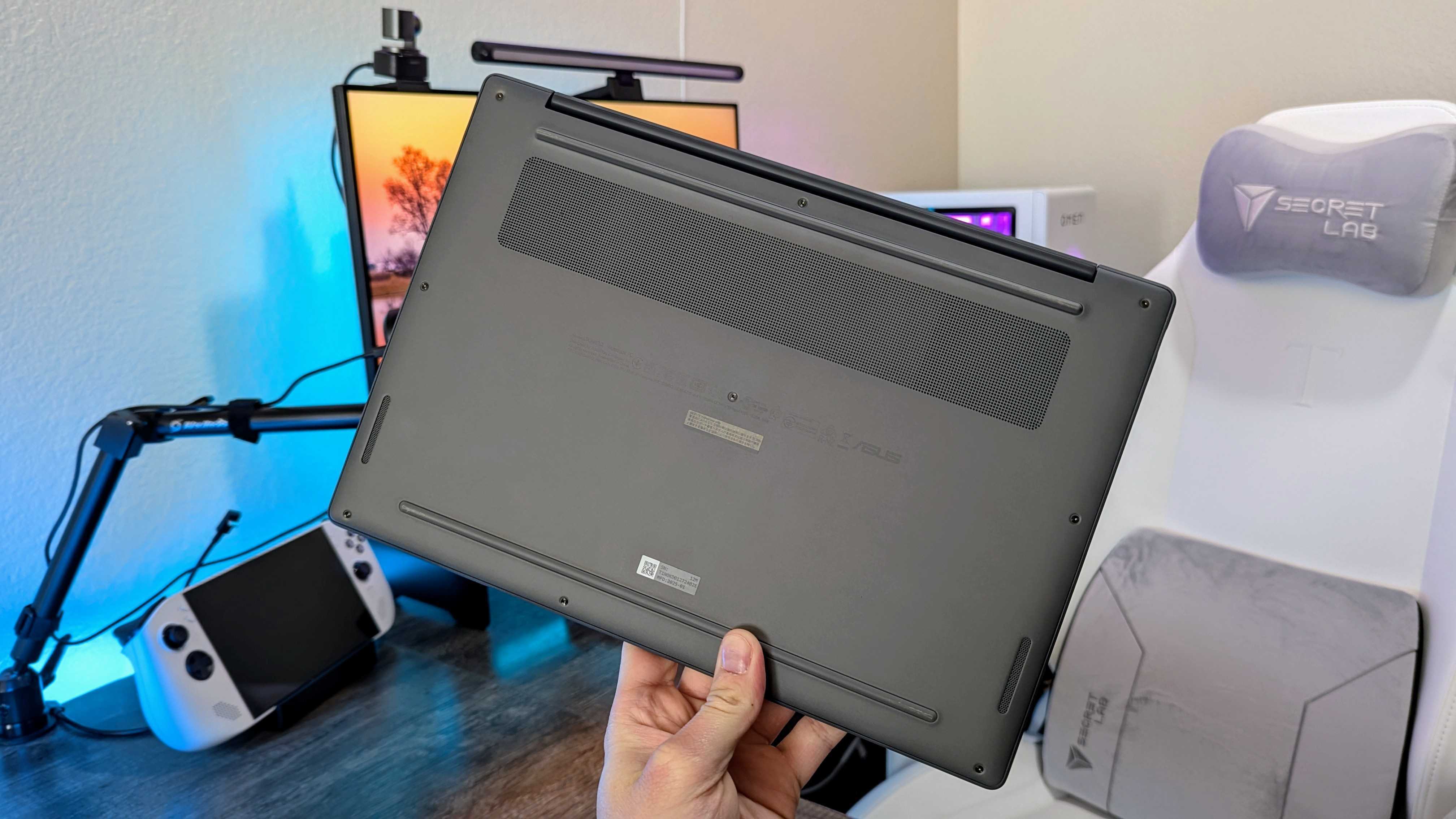
Turning back to the webcam, it's supported by an IR sensor that enables Windows Hello facial recognition. It's plenty fast when it works, but this is one of the less reliable laptops I've used, and you don't have a fingerprint sensor to fall back on. I've had to input my PIN a lot.
You also get a proximity sensor and ambient light sensor. The former brings support for Human Presence Detection (HPD) features, such as dimming the display when you look away, locking your laptop when you walk away, and waking your laptop as you approach.
The latter allows for automatic brightness adjustment, and it's both reasonable and subtle, which is a pleasant surprise. You also gain the ability to automatically adjust the display's color temperature depending on your environment; the usefulness of this is a little dubious to me, but you do get the feature.
Finally, wireless connectivity is fast and reliable thanks to Wi-Fi 6E and Bluetooth 5.3. If you care about Wi-Fi 7, though, that's limited to the mysterious Snapdragon X Elite model that won't be available indefinitely.
Zenbook A14 review: Also consider
Surface Laptop 7 14 — Snapdragon X Plus | 16GB RAM | 256GB SSD
Buy now: $999.99 at Best Buy
Surfaces aren't always easy to recommend, but the latest Laptop 7 genuinely earned our highest score possible. For once, the Surface Laptop is an incredible value, with an ultra-premium design, excellent 120Hz display, wonderful keyboard and haptic touchpad, and fantastic performance and efficiency.
Windows Central review ⭐⭐⭐⭐⭐
👉See at: BestBuy.com
Lenovo Yoga Slim 7x (Gen 9) — Snapdragon X Elite | 16GB RAM | 512GB SSD
Buy now: $1,199.99 at Best Buy
Still the only laptop to earn a perfect score from me, the Yoga Slim 7x boasts a larger 90Hz OLED display and a far more capable chipset for a little more. There's not as much RAM or storage in the base model, but the complete package is a phenomenal laptop (and you can upsize to a higher-end configuration).
Windows Central review ⭐⭐⭐⭐⭐
👉See at: BestBuy.com
👀Also consider: Lenovo Yoga Slim 7x (Gen 9) | 32GB RAM | 1TB SSD for $1,349.99 at Best Buy
Zenbook A14 review: Score card
Attribute | Rating & notes |
|---|---|
Value | ⭐⭐⭐⭐ — The Zenbook A14's $900 model was supposed to be the killer deal, but a $100 price increase makes the debate mostly moot. |
Design | ⭐⭐⭐⭐⭐ — A thin and light design that doesn't compromise on features or build quality; you really can't ask for much more from a laptop. |
Display | ⭐⭐⭐⭐ — This 14-inch OLED display is gorgeous, but it's not the sharpest or fastest and you'll feel that more and more as you go up to higher-end configurations. |
Performance | ⭐⭐⭐⭐ — The new entry-level Snapdragon X is cool and quick, but it's a lot easier to find its limits (especially with the GPU) than its bigger siblings. |
Software | ⭐⭐⭐⭐½ — The promise of the AI PC hasn't arrived yet, but you at least get stable, clean Windows with useful features, little bloatware, and future proofing. |
Battery | ⭐⭐⭐⭐⭐ — A humungous cell and efficient chipset make class-leading battery life possible. This is more than an all-day machine, regardless of what you do with it. |
Keyboard | ⭐⭐⭐⭐ — The keyboard and touchpad make for a capable and dependable duo, but I'm not a huge fan of ASUS' new, slippery key coating. |
Other hardware | ⭐⭐⭐⭐ — There are plenty of premium features you don't always find in more expensive machines, but the consistency isn't always there. |
Overall | ⭐⭐⭐⭐ — The Zenbook A14 could be one of the most underrated laptops of 2025, but the $100 price increase for the entry-level model makes it a little less of a great value. |
Zenbook A14 review: Final thoughts
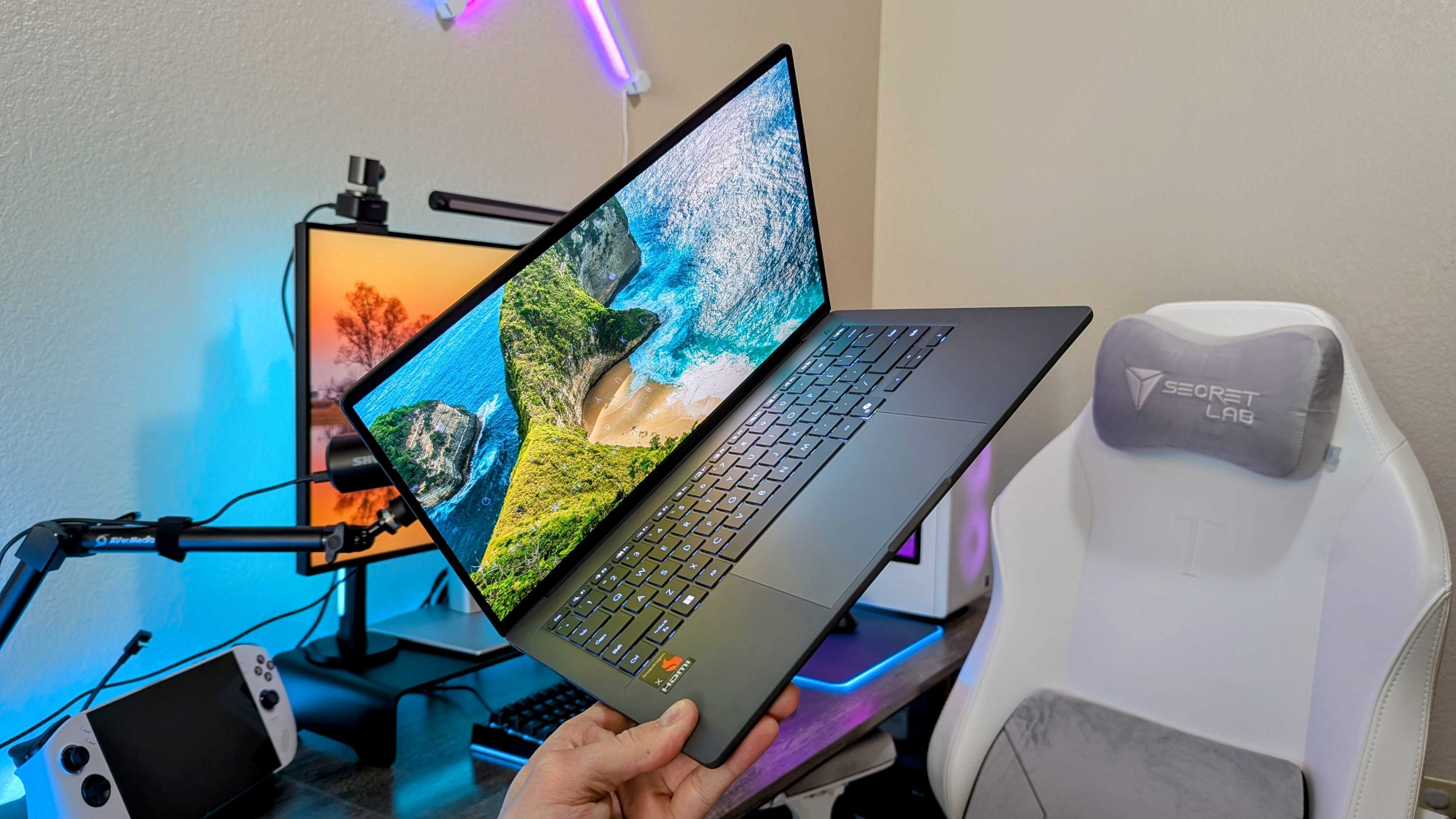
✅You should buy this if ...
- You need a reliable, simple laptop for years of casual computing
- You're looking for the lightest clamshell laptop possible
- You want a laptop that can reliably last all day
❌You should not buy this if ...
- You need a lot of power or want to game
- You don't want to choose between performance or memory/storage
I knew I wanted the ASUS Zenbook A14 on my desk the moment I first laid eyes on it, and my excitement went through the roof once I finally got my hands on it. This is a fascinating start for a new family in the ASUS catalog, and one that I think will prove extremely popular.
It starts with that lovely minimalist design, but not the kind of reductive minimalism that uses aesthetics to justify stripping away features. No, this is the kind of minimalist design that makes full use of absolutely every element of the laptop, and you're not losing out on features or build quality to achieve that super-light design.
Qualcomm Snapdragon X is the perfect platform to help this kind of laptop meet its full potential, too, with fantastic everyday performance and unbeatable battery life that Intel and AMD still can't quite touch.
I obviously have criticisms in various areas, but above all those minor quips is that the version of the Zenbook A14 I reviewed was not the model I believed you should really buy... Except now that model is here, and it costs $100 more than expected.
This is still a wonderful laptop and I can still heartily recommend the base level model even at its increased price, but it definitely does hamper the Zenbook A14's value proposition. At least choosing between the two configurations is easier — do you want more performance, or more memory and storage?
I'll be returning to this review once we get our hands on the entry-level Zenbook A14 you can now get for $999.99 at Best Buy with our thoughts on its performance and value proposition. Of course, you can also get the (still amazing) ASUS Zenbook A14 for $1,099.99 at Best Buy.
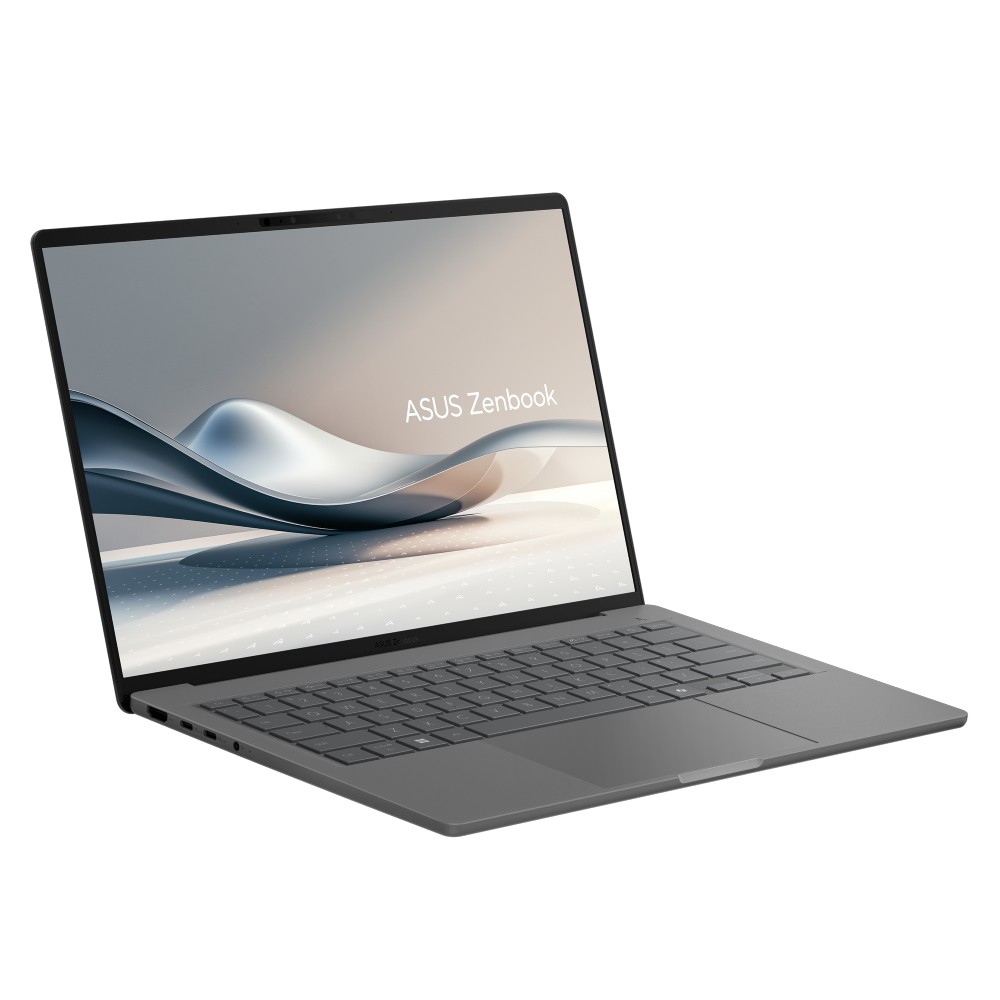
The new entry-level configuration may end up being even better than the model I reviewed, even with its price increase, but for now, the ASUS Zenbook A14 is one of the better laptops I've seen this year so far. It's an excellent all-day machine for casual consumers and mobile warriors, and being as light as it is, didn't require a single compromise.

Zachary Boddy (They / Them) is a Staff Writer for Windows Central, primarily focused on covering the latest news in tech and gaming, the best Xbox and PC games, and the most interesting Windows and Xbox hardware. They have been gaming and writing for most of their life starting with the original Xbox, and started out as a freelancer for Windows Central and its sister sites in 2019. Now a full-fledged Staff Writer, Zachary has expanded from only writing about all things Minecraft to covering practically everything on which Windows Central is an expert, especially when it comes to Microsoft. You can find Zachary on Twitter @BoddyZachary.
You must confirm your public display name before commenting
Please logout and then login again, you will then be prompted to enter your display name.
